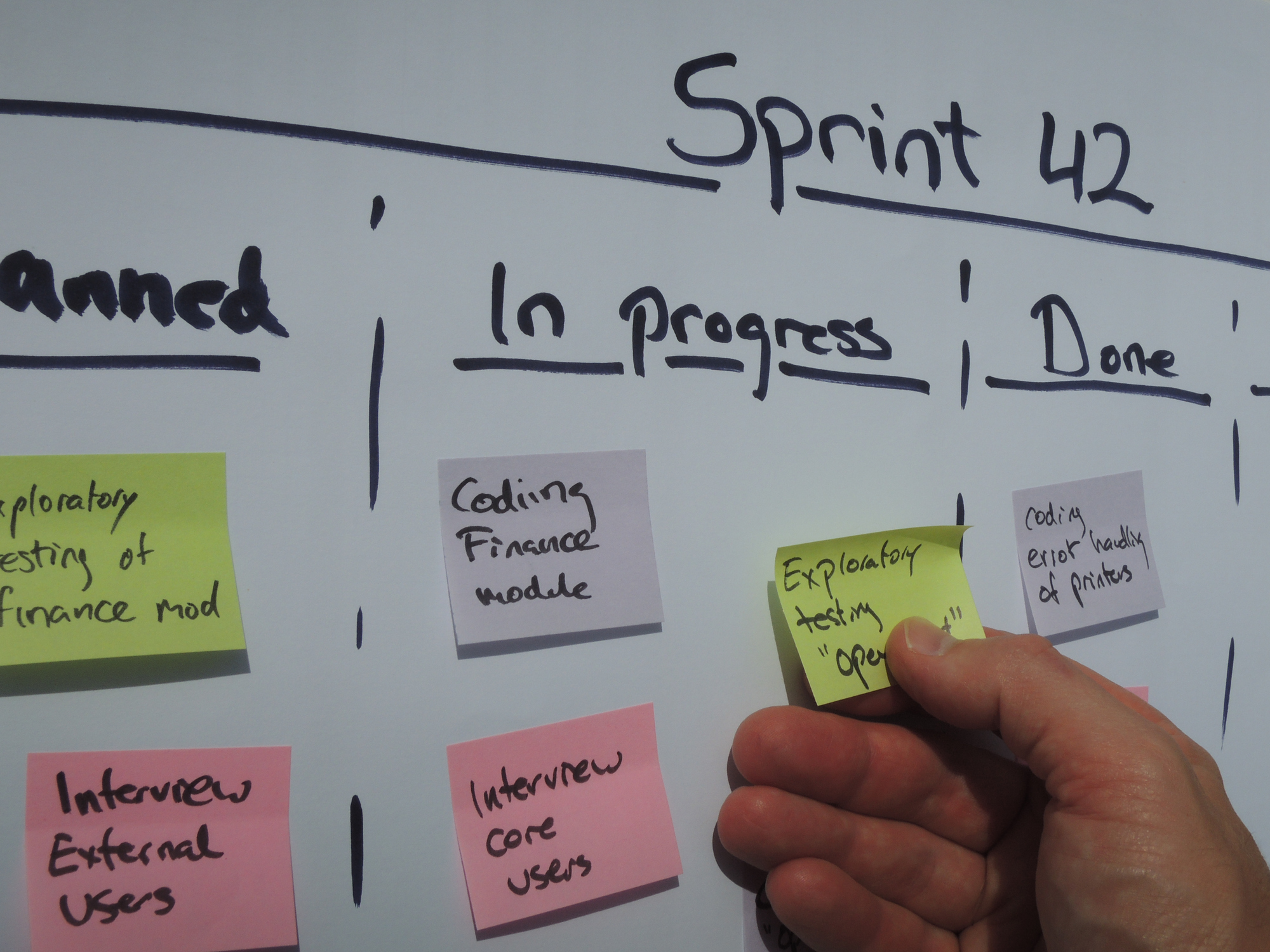
By: Project Management Academy on December 12th, 2018
Agile vs. Scrum: Is There a Difference?
For many in the project management industry, Agile and Scrum are terms you have likely heard for a while. And at first glance, it can feel like some people use the terms Agile and Scrum interchangeably. However, these terms have specific meanings, so it’s important to understand Agile vs. Scrum, and how they work together help you get your work done.
Let’s take a closer look at Agile vs. Scrum, and learn more about how you can adopt these practices to improve your project management approach.
What is Agile?
Agile is a methodology designed to make software development faster by taking an incremental approach to delivery. Instead of delivering a complete project all at once – like a website build, for example – teams deliver portions of a project, building off the previous version with each new iteration.
With this approach, cross-functional teams are collaborating with minimal oversight and access to constant feedback from end users. This leads to better results and faster delivery times. Agile teams work in iterations, making goals and plans that they commit to completing before the end of the iteration.
Work is organized by active tasks and a backlog of tasks. When one task is completed, another task is pulled in from the backlog. Tasks are organized by customer value, with the highest value tasks being completed first. At the end of each iteration, teams should have a completed and functional project.
What is Scrum?
Whereas Agile is a methodology, Scrum is the way in which that method is implemented. When it comes to Agile vs. Scrum, it’s best to think of them as a high-level methodology and an everyday way to carry out that methodology. In fact, Scrum is just one of the numerous ways to carry out Agile methodologies. There are other options too, but you’ll find Scrum tactics used in many businesses that have adopted Agile practices. Here, we will look at the structure of Scrum that makes it unique.
Scrum is organized into iterations, or sprints as they are known in Scrum terminology. Sprints are usually two weeks or a month long, and team members agree to the tasks they will complete during the sprint before it begins. Once the sprint begins, teams are encouraged to avoid changing any tasks.
Sprints are marked by three key types of meetings – sprint planning, daily standups, and sprint retrospectives. Each of these meetings plays an essential role in keeping team members and tasks on schedule.
-
Sprint Planning – In sprint planning, team members commit to the tasks they will complete during the sprint.
-
Daily Standups – This is a 15-minute meeting each morning for team members to touch base and update their team on how their tasks are progressing. This also gives team members an opportunity to alert the team if they’re facing any challenges or impediments.
-
Sprint Retrospective – At the end of each sprint, the team reflects on what they did well and what they could do better in the future. They draw lessons from this retrospective and apply them to future sprints.
One key role in the Scrum structure is the Scrum Master. This is a project manager who facilitates the Scrum process, helping team members manage their tasks and remove any impediments holding back progress.
What You Should Know about Agile Certification
Certifications around these two subjects – Agile and Scrum – can get a little confusing. But, now that you know a little bit more about Agile vs. Scrum, let’s look at how you can use the Agile Methodology and the Scrum structure to improve your projects and your professional future.
If you want to become an Agile expert with a certification, there’s only one official certification you can pursue the PMI Agile Certified Practitioner (PMI-ACP)® certification. If you have any current Agile experience or you would like to apply Agile Methodologies to your business, you should consider taking the PMI-ACP® exam. Not only will this improve the way you manage projects, but it will also improve your resume and open up doors to new professional opportunities.
So, how can you earn your PMI-ACP certification? Like earning the Project Management Professional (PMP)® certification, there are a few requirements you have to meet before you are eligible to take the exam. While meeting these requirements may take some time and effort on your part as you prepare for the exam, the return on your investment will definitely be with your hard work. Here are the requirements you have to meet to be eligible for the PMI-ACP exam:
-
Pay your exam fee, which is $495 for Non-PMI members, or $435 if you are a member.
-
Earn 2,000 hours of general project experience. If you already have your PMP® certification, the hours you already earned would satisfy this requirement.
-
Spend 1,500 hours working on Agile teams or using Agile Methodologies. (These hours are in addition to the 2,000 hours of general project management experience you must earn.)
-
Earn 21 contact hours of training in Agile practices. Make sure you choose a PMI-approved training provider to help you fulfill these requirements.
Once you have earned the PMI-ACP certification, there’s still more work to be done. You must renew your certification every three years. To maintain your PMI-ACP credential, you must earn 30 Professional Development Units (PDUs) focused on Agile topics within the three year period. Once the three years is up, you start the cycle over again. Because Agile and Scrum are so interconnected, it’s wise to find a training provider that offers thorough courses on both.
When it comes to Agile vs. Scrum, you now have a better understanding of what each term actually means and how they relate. Earning the PMI-ACP certification is a wise step to take if you want to further your career as a project manager.



